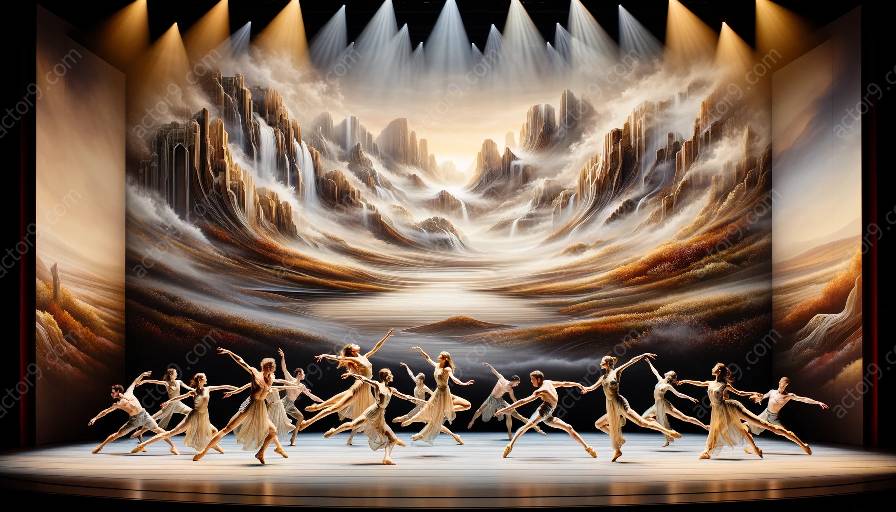Physical theatre choreography has evolved over the years to embrace new trends and set the stage for future advancements. In this topic cluster, we will explore the contemporary trends and future directions in physical theatre choreography, examining the fusion of dance and dramatic storytelling, innovative use of technology, and the emerging challenges and opportunities shaping the future of this artistic expression.
Contemporary Trends in Physical Theatre Choreography
Contemporary physical theatre choreography encompasses a diverse range of styles and influences, reflecting the evolution of this art form. One of the prominent contemporary trends is the fusion of dance and dramatic storytelling, where choreographers interweave intricate movement sequences with compelling narratives, blurring the lines between traditional dance and theatre.
Another trend involves the integration of interdisciplinary collaborations, incorporating elements of visual art, music, and multimedia to enrich the theatrical experience. This multidisciplinary approach creates innovative platforms for choreographers to explore new forms of expression and engage audiences in unique ways.
Furthermore, physical theatre choreography has increasingly embraced diversity and inclusivity, with choreographers seeking to represent a wide spectrum of cultural traditions, body types, and perspectives. This inclusive approach not only fosters a richer tapestry of storytelling but also promotes greater representation and understanding within the performing arts community.
Future Directions in Physical Theatre Choreography
Looking ahead, the future directions of physical theatre choreography are poised to be shaped by technological advancements, sustainability efforts, and evolving societal dynamics. The integration of technology, such as motion capture, virtual reality, and interactive projections, presents exciting opportunities for choreographers to push the boundaries of creativity and audience engagement.
Additionally, the future of physical theatre choreography will likely be influenced by sustainability initiatives, with a growing emphasis on eco-friendly production practices, ethical sourcing of materials, and environmentally conscious storytelling. This environmental awareness will prompt choreographers to explore innovative ways of staging performances that minimize ecological impact while maximizing artistic impact.
Social and cultural changes are also expected to drive future directions in physical theatre choreography, as choreographers respond to shifting societal norms, global events, and advocacy movements. This dynamic landscape will inspire choreographers to address pressing social issues, provoke meaningful dialogue, and adapt their creative approaches to resonate with contemporary audiences.
Challenges and Opportunities
Amidst the evolving trends and future directions, physical theatre choreography faces both challenges and opportunities. One notable challenge is the need to navigate the digital landscape and harness technology thoughtfully, ensuring that the integration of digital elements enhances, rather than detracts from, the live theatrical experience.
Furthermore, as physical theatre choreography continues to embrace diversity and inclusivity, there is a persistent need to dismantle barriers and foster equitable opportunities for artists from marginalized communities. By addressing these challenges, the field of physical theatre choreography can seize opportunities to foster a more vibrant, inclusive, and forward-thinking creative landscape.
In conclusion, the contemporary trends and future directions in physical theatre choreography are characterized by innovation, inclusivity, and adaptation to emerging societal and technological landscapes. As choreographers continue to push artistic boundaries and navigate evolving dynamics, the world of physical theatre choreography is poised to captivate, inspire, and transcend traditional artistic conventions.




































